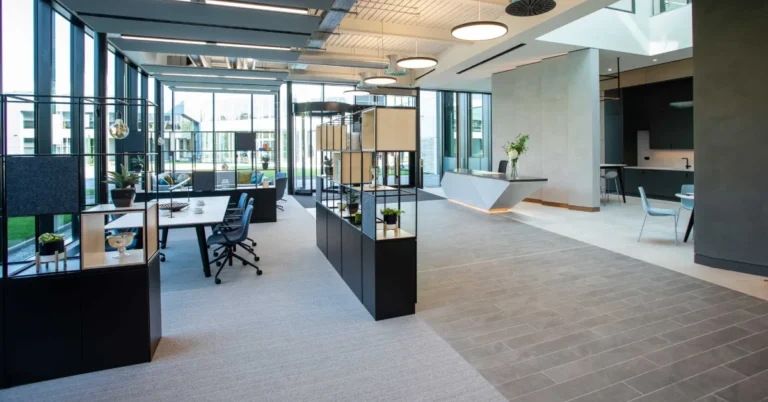Table of Contents
Beyond furniture and style
A successful workspace today is more than an attractive office. Comfort and collaboration remain essential, but functionality now extends far beyond the physical setting. With the rise of hybrid work and digital collaboration, an office must also protect the information that flows through it. Every connected device, shared document, and online meeting introduces a potential security risk.
Yet many companies still design their offices around ergonomics and creativity without giving the same attention to data protection. The modern workplace should combine aesthetics, efficiency, and digital security in a single, coherent environment.
The hidden layer of modern design
The shift towards remote access, online storage, and cloud-based tools has transformed how employees operate. It has also multiplied vulnerabilities. Each smartphone, tablet, or laptop connected to a company network can become an entry point for cyberattacks if not properly secured. The UK’s National Cyber Security Centre regularly reminds small businesses that cybersecurity is no longer an issue reserved for large corporations.
Phishing attempts, weak passwords, and data leaks affect organisations of every size. Ignoring these risks can undo months of productivity and trust in a single incident. Integrating security thinking into office design is now part of responsible management.
Practical tools for a safer workspace
Good protection starts with structure. A business password manager provides a simple and reliable way to reduce risks linked to account sharing or forgotten credentials. It stores all passwords safely, generates new ones that are complex and unique, and ensures that access to shared resources remains controlled. For teams, it removes one of the most common sources of breaches: reused or easily guessed passwords.
When combined with two-factor authentication and encrypted networks, it builds a security base that works quietly in the background. Employees can focus on their work knowing that their digital environment is stable and secure.
Designing efficiency through security
Design and protection do not oppose each other; they complement one another. An efficient office should make daily tasks easier while protecting both people and data. Encouraging staff to follow good practices, such as locking devices when away or verifying the authenticity of links, reinforces this shared responsibility. Digital security becomes most effective when it feels natural and integrated into everyday habits. Just as lighting or ventilation are considered essential to a comfortable workspace, protecting information should be part of its design from the very beginning.
A well-planned office, both physical and digital, promotes creativity, confidence, and collaboration. When safety is built into its foundations, a business can innovate freely and focus on what truly matters: ideas, not incidents.

